Nothing (2a) – a nothing special smartphone for the masses (review)
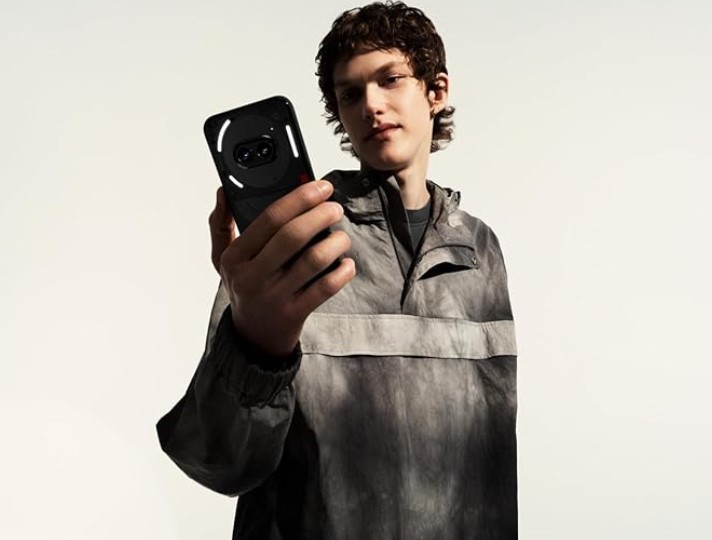
The Nothing (2a) comes from Nothing, which proudly states, “We’re building a world where tech is fun again”. And the Nothing (2a) kinda is with its Glyph lights.
I am sure they have heard every joke and pun about nothing, so we will refrain from taking the piss out of them.
By rights, Nothing should fail when pitted against the might of Samsung, OPPO, Motorola, et al., yet its gear is good enough for JB to allocate shelf space (sure, it pays for that) and go from nothing to cult hero in practically no time (2020).
Let’s compare the Nothing (2a) to the competition (the Motorola Edge 50 Fusion in brackets).
- $529 for 8/128GB or $599 for 12/256GB ($599 12/256GB inc. charger and bumper case)
- 6.7” 2412 x 1080, 10-bit/1.07 billion colours, 120Hz OLED (6.7” 2400 x 1080, 10-bit/1.07 billion colour pOLED)
- MediaTek Dimensity 7200 Pro [similar specs to SD870] (QualcommSD7S Gen 2)
- 4/5G city and suburbs reception only (City/suburb/regional/rural reception)
- Wi-Fi 6 and BT 5.3 (Wi-Fi 5 AC and BT 5.2)
- 5000mAh battery, 1 hour/45W charge capable, no charger supplied (5000mAh, 52minutes/ 68W charger in box)
- 50+50+32MP camera (50+13+32MP Sony Lytia)
- Android 14 and 2+3+4 Warranty/OS upgrade/Security patch (same)
The Nothing (2a) was one of the best-value mid-range phones (still is) until the Motorola Edge 50 Fusion – the best value smartphone with Edge benefits kinda blew its specs out of the water.
Seeing a ‘new’ phone has been interesting, and we applaud their efforts to be different (and have fun). It has a big brother – the $999 Nothing 2 with a Qualcomm SD8+ Gen 1, which should give it good phone signal coverage, but again, it has just been outclassed by the $999 Motorola Edge 50 Pro – an excellent upper-mid-range smartphone.
Warning – do not buy grey market
Nothing is a trendy phone brand with a huge grey market. Only buy the Australian-certified version for Telco networks and an Australian warranty from Nothing (it has an Amazon store) or JB Hi-Fi. You can check its bonafide by an R-NZ C-Tick on the packaging and under Settings, About Phone, and Regulatory labels.
Read Don’t buy a grey market smartphone.
New review format
We are experimenting with our review format. Where we used to put all the raw data in tables at the end, we will now break them up and briefly comment on the various parts. Why? Readers who want to know more will paw over the tables. Readers who wish to see if it’s a good phone can just read the comments. Of course, we still have CyberShack’s’ View and rating explanation at the end – do make sure you read that.
We use Fail (below expectations), Pass (meets expectations) and Exceed (surpasses expectations or is the class leader) against many of the items below. We occasionally give a Pass(able) rating that is not as good as it should be and a Pass ‘+’ rating to show it is good but does not quite make it to Exceed. You can click on most images for an enlargement.
We are also tightening up on grading. From now on, Pass, for example, means meeting expectations for the price bracket. We consider a Pass mark to be 70+/100 with extra points added for class-leading and excellence.
Australian review: Nothing (2a), 8/128GB (or 12/256GB), dual SIM, Model A142
| Brand | Nothing |
| Model | Nothing 2a |
| Model Number | A142 |
| RAM/Storage Base | 8/128GB |
| Price base | $529 |
| Price 2 | $599 12/256GB |
| Colour | Black Milk Special Edition |
| Warranty months | 24-months |
| Tier | Mid-range |
| Website | Nothing AU Product page |
| From | JB Hi-Fi or Amazon AU Nothing Store |
| Country of Origin | China |
| Company | Nothing (Est. 2020) is London-based and is manufactured in China. |
| More | CyberShack smartphone news and reviews |
| Test date | 1-20 July 2024 |
| Ambient temp | 8-15° |
| Release | March 2024 |
| Other models not for Australia (Don’t buy) | Only buy from Nothing Online or JB Hi-Fi. The rest are grey market. |

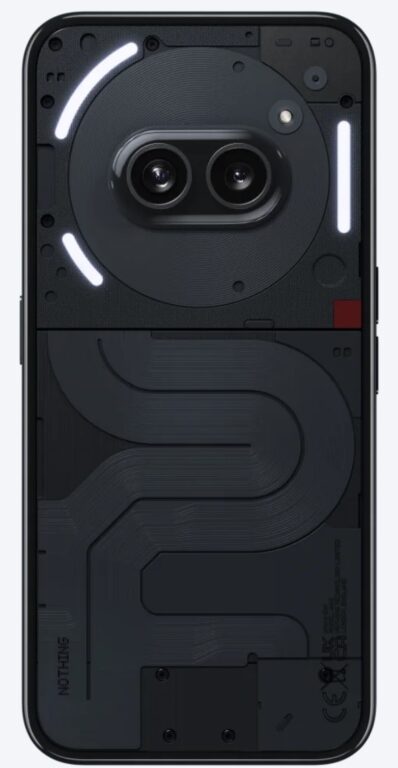
First Impression – interesting
Nothing wanted to get our attention among a sea of glass slabs. It succeeded. The ‘good’ is the interesting transparent rear panel with Glyph lights and its two ‘eyes’ (2 x 50MP camera sensors). The front has a 6.7” OLED screen. It follows Nothing’s ‘design language’.
The Nothing (2a) is unashamedly plastic, from the back to the rather prominent chassis. Its appearance is reminiscent of the colourful Nokia Lumia Windows phones of the past—and I liked that.
As the review testing progressed, I started to see a subplot emerge. Nothing is not out to create the biggest, best, fastest, most innovative phones. Its tech (apart from the Glyph lights) is the same as in every other Android phone, making it easy to compare ‘speeds and feeds’. It is why we can say that, at least on paper, it is better or worse than other phones.
We suggest you read this review to realise what it can do and decide from there.
Screen – Pass+
It is a bright, daylight-readable, colour-accurate, 10-bit OLED screen that can display HDR10+, but it is wasted as it cannot decode HDR10+ or Dolby Vision metadata.
It has Gorilla Glass 5 and a pre-applied TPM screen protector.
| Size | 6.7″ |
| Type | AMOLED (Not LTPO) |
| Flat, Curve, 2D, 3D | Flat with centre o-hole |
| Resolution | 2412 x 1080 |
| PPI | 394 |
| Ratio | 20:9 |
| Screen to Body % | 87.6% |
| Colours bits | 10-bit/1.07 billion colours |
| Refresh Hz, adaptive | High: 120Hz maximum Standard: 60Hz Dynamic: 60/90/120Hz Note that the screen only supports 60/90/120Hz stepping, not LTPO AMOLED. It advertises a 30Hz base – we could not find that. |
| Response 120Hz | 240Hz |
| Nits typical, test | 700 (Test 675) |
| Nits max, test | HBM 1100 (Test 985) Peak HDR 1300 |
| Contrast | Infinite |
| sRGB | 100+% |
| DCI-P3 | Claim 100% |
| Rec.2020 or other | N/A |
| Delta E (<4 is excellent) | 3 |
| HDR Level | HDR10+ (no Dolby Vision decode) |
| SDR Upscale | No |
| Blue Light Control | No – unusual |
| PWM if known | Claim 2160, but we measured 100Hz cycles at low brightness. PWM-sensitive users must try this screen first. |
| Daylight readable | Yes |
| Always on Display | Yes – basic info |
| Edge display | No |
| Accessibility | Usual Android 14 |
| DRM | L1 FHD SDR – not Netflix certified for HDR |
| Gaming | The processor power and screen response (.79 GtG) is sufficient to play HD games up to 60fps. But it is not really designed for heavy gaming. See https://nothing.community/d/7183-games-on-nothing-phone-2a |
| Screen protection | Pre-applied TPM protector Gorilla Glass 5 MOHs hardness 6 |
| Comment | The Nothing Glyph interface includes 26 individually addressable zones. The three lights support the Glyph Timer, notifications, the Glyph Torch, and Glyph Progress. |
Processor – Pass
To use a car analogy, it is a naturally aspirated 4-cylinder, perfectly fit for daily commutes.
| Brand, Model | Like SD860 or Exynos 1380 Benchmarks |
| nm | 4nm TSMC N4P |
| Cores | 2 x 2.8GHz & 6 x 2.0GHz |
| Modem | MediaTek 3GPP R16 5G modem |
| AI TOPS OR Multi-thread Integer Operations Per Second (INOPS) GINOPS = billion | NPU 650 is around 4 TOPS – only sufficient for AI photo post-processing. 10.26 GFLOPS 14.47 GINOPS |
| Geekbench 6 Single-core | 1115 |
| Geekbench 6 multi-core | 2571 |
| Like | Like SD860 or Exynos 1380 Benchmarks |
| GPU | Mail-G610 MC4 |
| GPU Test | |
| Open CL | 3289 |
| Like | SD870 |
| Vulcan | 3274 |
| RAM, type | 8GB as tested plus up to 8GB virtual ram |
| Storage, free, type | 128GB (or 256) UFS 3.1, 95GB free |
| micro-SD | No |
| CPDT internal seq. Read MBps sustained | 995 Jazz maximum 1032.26 |
| CPDT internal seq. write MBps sustained | 488 Jazz maximum 533.89 |
| CPDT microSD read, write MBps | N/A |
| CPDT external (mountable?) MBps | Files find it as an OTG for cut and paste but not as a mountable device and will not speed test. |
| Comment | It is a 7-series SoC—one step above the 6-series entry-level SoC. Above it are the 8 and 9 series. In some respects, it is close to Qualcomm SD4 and Exynos 1380; in others, it hits older SD8 series benchmarks. It is best to think of this as a typical 4-cylinder car. |
Throttle test – Pass
We suspect it automatically throttles to 80% for heat control when it encounters a prolonged load.
| Max GIPS | 245115 |
| Average GIPS | 215701 |
| Minimum GIPS | 200013 |
| % Throttle | 17% |
| CPU Temp | 50° |
| Comment | It has decent thermal management, although 4nm SoC does not run all that hot anyway. We suspect that Nothing (2a) deliberately throttles to prevent heat anyway – it starts strongly for three minutes and drops to a rock-solid 80% for the remainder of the test. |

Comms – Pass
It has everything you need—Wi-Fi, BT, GPS, and NFC. However, the Aussie version does not support Wi-Fi 6E, so we get a maximum data speed of 1200Mbps instead of 2400Mbps.
| Wi-Fi Type, model | Advertised as Wi-Fi 6 dual-band 2.4/5GHz. Test equipment shows it supports Wi-Fi 6E tri-band 2.4/5/6GHz 2 x 2 MIMO. A firmware update is needed to activate this. |
| Test 2m -dBm, Rx/Tx Mbps | -33/1201/1201 |
| Test 5m | -47/1201/1201 |
| Test 10m | -51/1201/1161 |
| BT Type | 5.3 |
| GPS single, dual | Single band GPS, BeiDou, Glonass, Galileo, QZSS, and NavIC. 2 m accuracy is suitable for in-car navigation. |
| USB type | USB-C 2.0 OTG (no audio/video alt DP) |
| ALT DP, DeX, Ready For | No |
| NFC | Yes |
| Ultra-wideband | No |
| Sensors | |
| Accelerometer | Yes |
| Gyro | Combo with Accelerator |
| e-Compass | Yes |
| Barometer | |
| Gravity | |
| Pedometer | |
| Ambient light | Yes |
| Hall sensor | |
| Proximity | Yes |
| Other | |
| Comment | Someone should tell Nothing that we have Wi-Fi 6E down under. The data speeds are OK for general use but much lower than it could achieve. |
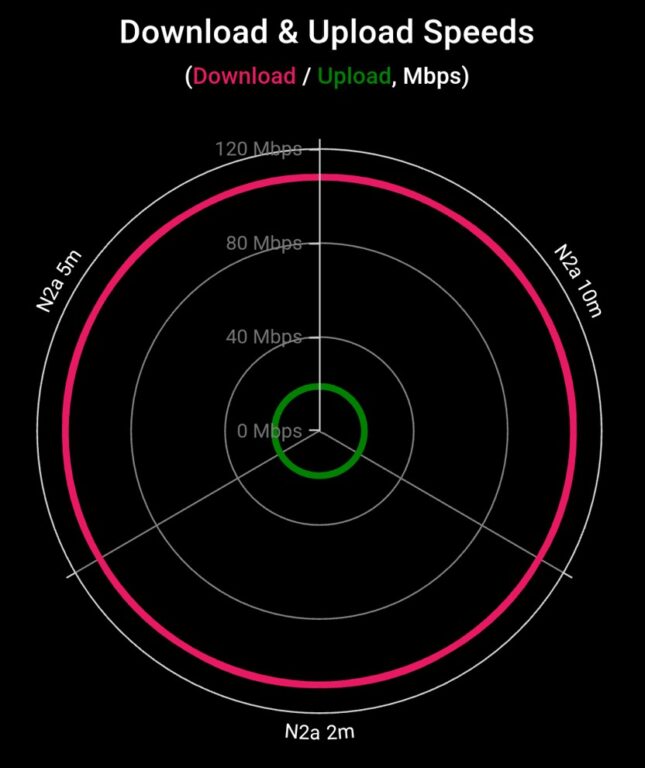

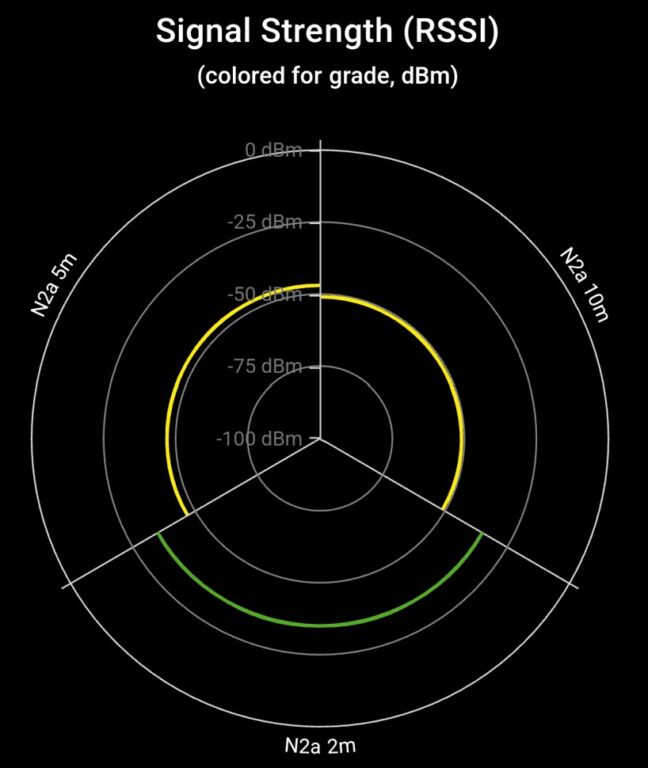
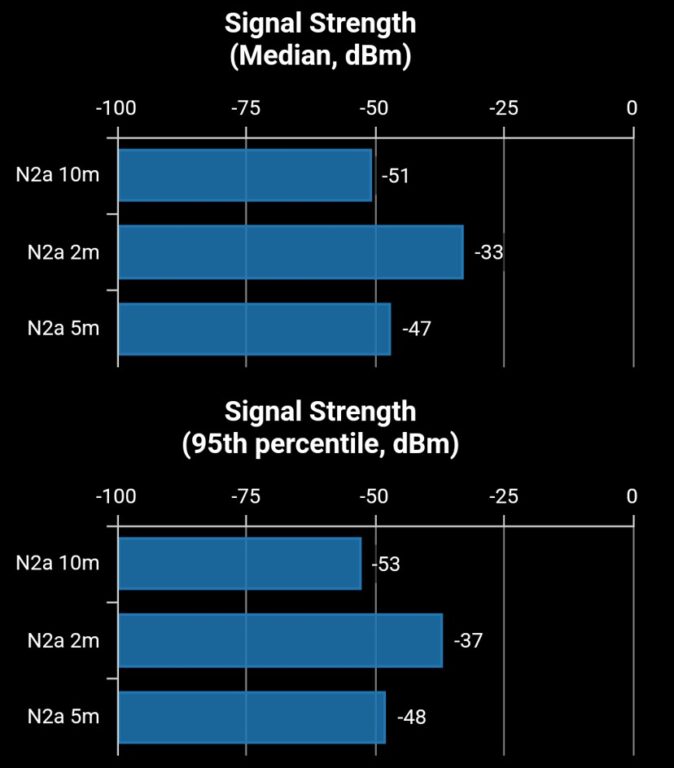


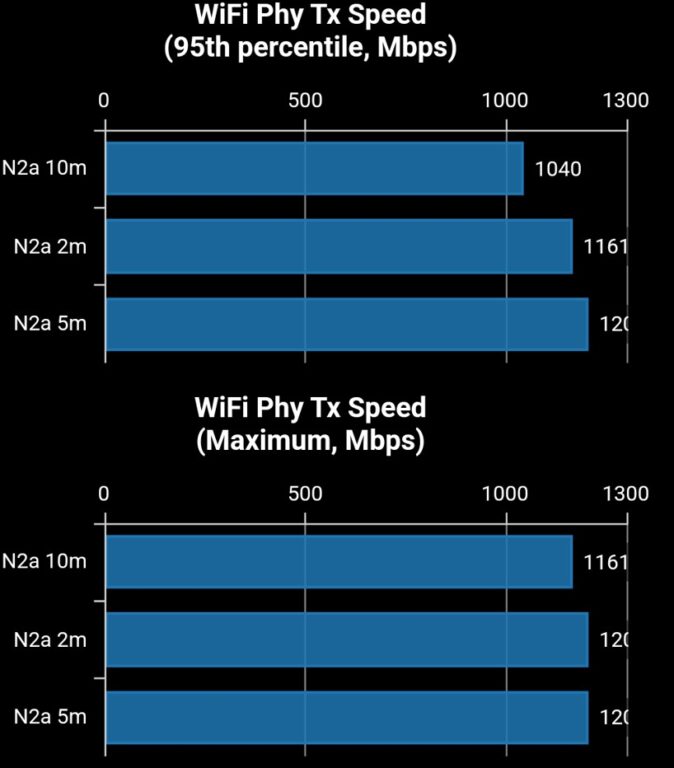
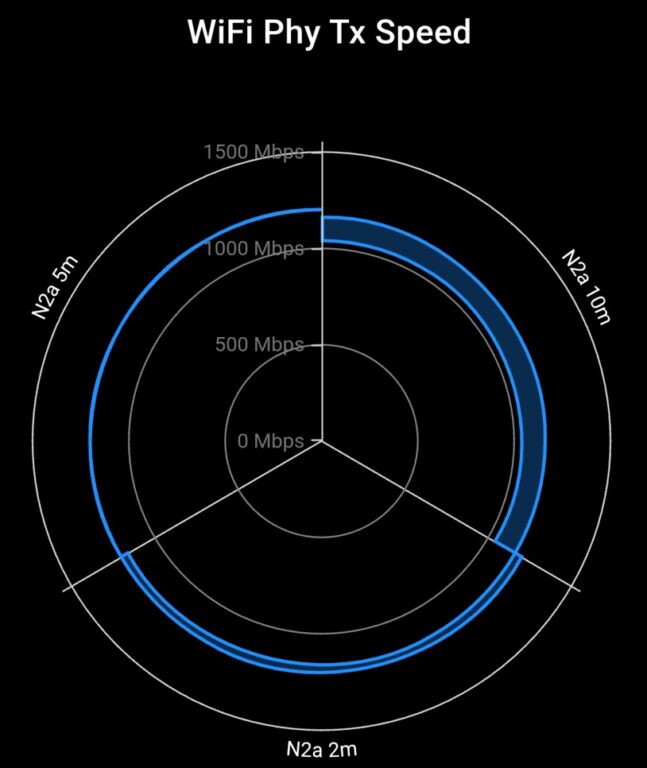
4/5G – Pass
MediaTek modems usually get a solid single-tower signal, which is perfect for city and suburban use. However, they fail because they cannot see the multiple towers needed for regional, rural, and black spot use.
| SIM | Dual SIM (no eSIM) |
| Active | DSDS (only one active at a time) |
| Ring tone single, dual | Single |
| VoLTE | Yes |
| Wi-Fi calling | Yes |
| 4G Bands | B1, 3, 4, 5, 7, 8, 18, 19, 20, 26, 28, 38, 39, 40, 41, 42, 66 |
| Comment | Close to a world phone |
| 5G sub-6Ghz | n1, 3, 5, 7, 8, 20, 28, 38, 40, 41, 66, 77, 78 |
| Comment | All Australian sub-6 bands but not a world phone |
| mmWave | No |
| Test Boost Mobile, Telstra | |
| DL/UL, ms | 34.2/22/8/30ms – average |
| Tower 1 -dBm, fW or pW | -74 to -88 and 1.6pW to 39.8pW – excellent |
| Tower 2 | No |
| Tower 3 | No |
| Tower 4 | No |
| Comment | Strictly a city and suburbs phone where there is good tower coverage. I have always been impressed with MediaTek’s single-tower coverage, but that does not reflect Australian conditions. You need multiple tower coverage to guarantee access, particularly in black spot areas. |
Battery – Pass+ for typical users
| mAh | 5000mAh 3.89V/4.92A/19.14W |
| Charger, type, supplied | Not supplied Claim 45W, but cable is only 3A (usually 27W) |
| PD, QC level | PD 3 |
| Qi, wattage | N/A |
| Reverse Qi or cable. | N/A |
| Test (60Hz or adaptive screen) | Dynamic (allegedly the best battery life) |
| Charge % 30mins | 60% |
| Charge 0-100% | 1 hour |
| Charge Qi, W Using Belkin Boost Charge 15W fast wireless charge | N/A |
| Charge 5V, 2A | 4 hours |
| Video loop 50%, aeroplane | 23 hours 1 minute |
| PC Mark 3 battery | 18 hours 47 minutes Accubattery 13 hours 55 minutes |
| GFX Bench Manhattan battery | Hung – out of memory |
| GFX Bench T-Rex | 857.2 minutes (14.24 hours) 3356 frames |
| Drain 100-0% full load screen on | 4 hours and 25 minutes Accubattery: 4 hours 45 minutes |
| mA Full load screen on | 1300-1400 |
| mA Watt idle Screen on | 300-350 |
| Estimate loss at max refresh | N/A |
| Estimate typical use | Most users will get 24 hours of use, and heavy users will get between 8 and 10 hours of use. |
| Comment | It has excellent video loop times, but this is the least demanding test. The disparity between PC Mark (18 hours 47 minutes) and Accubattery (13 hours and 55 minutes) is more about how energy efficient the SoC is. It draws quite a lot of power under load. |
Sound hardware – Pass
| Speakers | Stereo earpiece and down-firing speaker. |
| Tuning | N/A |
| AMP | MediaTek |
| Dolby Atmos decode | No |
| Hi-Res | N/A |
| 3.5mm | FSA4480 UDB-C DAC |
| BT Codecs | SBC, AAC, aptX, aptX HD, LDAC, LHDC v3/5 16-bit/48000Hz |
| Multipoint | Yes |
| Dolby Atmos (DA) | No |
| EQ | No |
| Mics | 2 – presume one is for noise cancelling. |
| Test dB – all on EQ flat DA off | |
| Volume max | 84.3 |
| Media (music) | 76.5 |
| Ring | 79.5 |
| Alarm | 84 |
| Notifications | 83 |
| Earpiece | No volume control |
| Hands-free | Reasonable volume |
| BT headphones | Average volume and channel separation |
Sound quality – Passable
In summary – no bass or treble – perfect for clear voice.
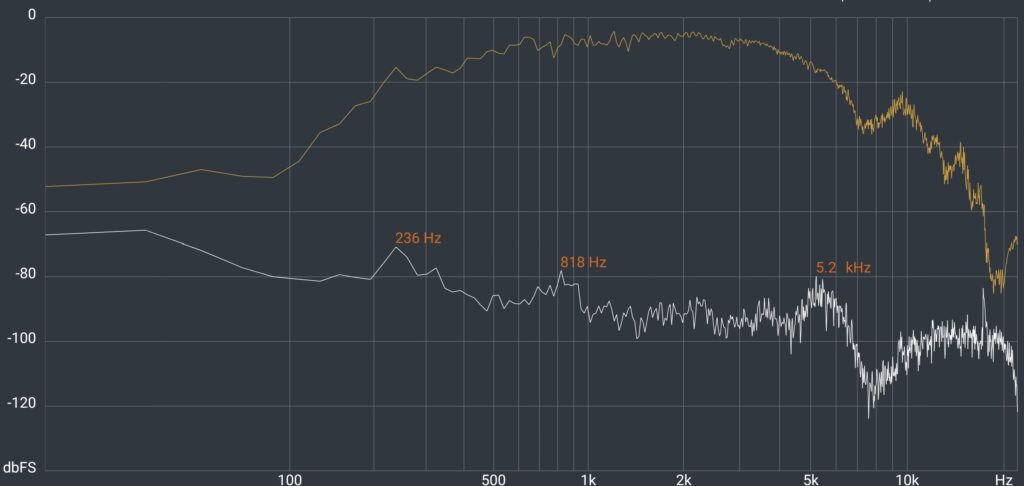
| Deep Bass 20-40Hz | Nil |
| Middle Bass 40-100Hz | Nil |
| High Bass 100-200Hz | Slow climb to 1kHz |
| Low Mid 200-400Hz | Slow climb to 1kHz |
| Mid 400-1000Hz | Slow climb to 1kHz |
| High-Mid 1-2kHz | Flattening |
| Low Treble 2-4kHz | Flat |
| Mid Treble 4-6kHz | Flat |
| High Treble 6-10kHz | Decline to 8kHz, slight increase to 10kHz |
| Dog Whistle 10-20kHz | Off the cliff |
| Sound Signature type | Mid for clear voice. Music quality lacks any bass or treble and lacks any vitality. |
| Soundstage | As wide as the phone. DA and spatial content do not give any 3D height or surround. |
| Comment | It is easy to be a ‘harsh’ judge, but most phones are no better. This has a decent balance between the speakers and decent left-right separation, but the micro-speakers cannot do more. |
Build – Pass
The Nothing (2a) case and chassis are made of 100% plastic, which is not a bad thing and costs much less. It is also a little thicker and heavier than most.
We have two comments. The first is that there is no charger. A 45W PD charger will cost at least $60, and you will need a 5A USB-C to USB-C cable at $30 to get a fast charge.
| Size (H X W x D) | 161.74 x 76.32 x 8.55 |
| Weight grams | 190g |
| Front glass | Gorilla Glass 5 and TPM screen protector |
| Rear material | Transparent PMMA |
| Frame | PMMA |
| IP rating | IP54 – better than nothing |
| Colours | Black Milk Special Edition |
| Pen, Stylus support | No |
| In the box | |
| Charger | No |
| USB cable | 1m USB-C to USB-C 2.0 3W cable |
| Buds | No |
| Bumper cover | No |
| Comment | Use any PPS or PD charger 45W+ and 5A cable. |
Teardown – repairability 5/10
Durability test
OS – Pass
It has Android 14 and should get Android 17. Nothing OS 2.5 is a quirky overlay on pure Android, meaning there are few ‘customisations’, like Motorola’s added-value gestures, etc.
Most of the text is in ‘Dot Matrix’ font. You get a choice of visual styles. Overall, things are where you expect them to be.
The under-glass fingerprint sensor was inconsistent and scored 7/10 on the repetitive test. This reflects the occasional lack of screen responsiveness when it is doing something behind the scenes.
| Android | 14 |
| Security patch date | 1 July 2024 |
| UI | Nothing OS 2.5 |
| OS upgrade policy | Three years |
| Security patch policy | Four years |
| Bloatware | It is very clean. |
| Other | Nothing OS is more a skin. |
| Security | |
| Fingerprint sensor location, type | Under glass – 7/10 test |
| Face ID | 2D |
| Other | All security is Android 14-based |
| Comment | Android benefits from a third-party paid program like Trend Micro, especially for its public Wi-Fi protection. |
Nothing (2a) camera – Pass
It is a basic point-and-shoot camera that is good in daylight, adequate in office light, and works well in auto night mode. The dynamic range and HDR details underwhelmed us.
That comes down to the two-sensor setup. The primary 50MP does all the work, leaving the secondary 50MP ultra-wide for one job only.
The Nothing 1 has a similar 50+50MP setup and scored 114 in the DXOMARK in the company of the Samsung S21 Ultra and just below the Apple iPhone 11. It found photo issues with exposure (dynamic range), colour accuracy, autofocus, noise, zoom and bokeh. Video issues included exposure, autofocus and colour.
Rear camera test shots





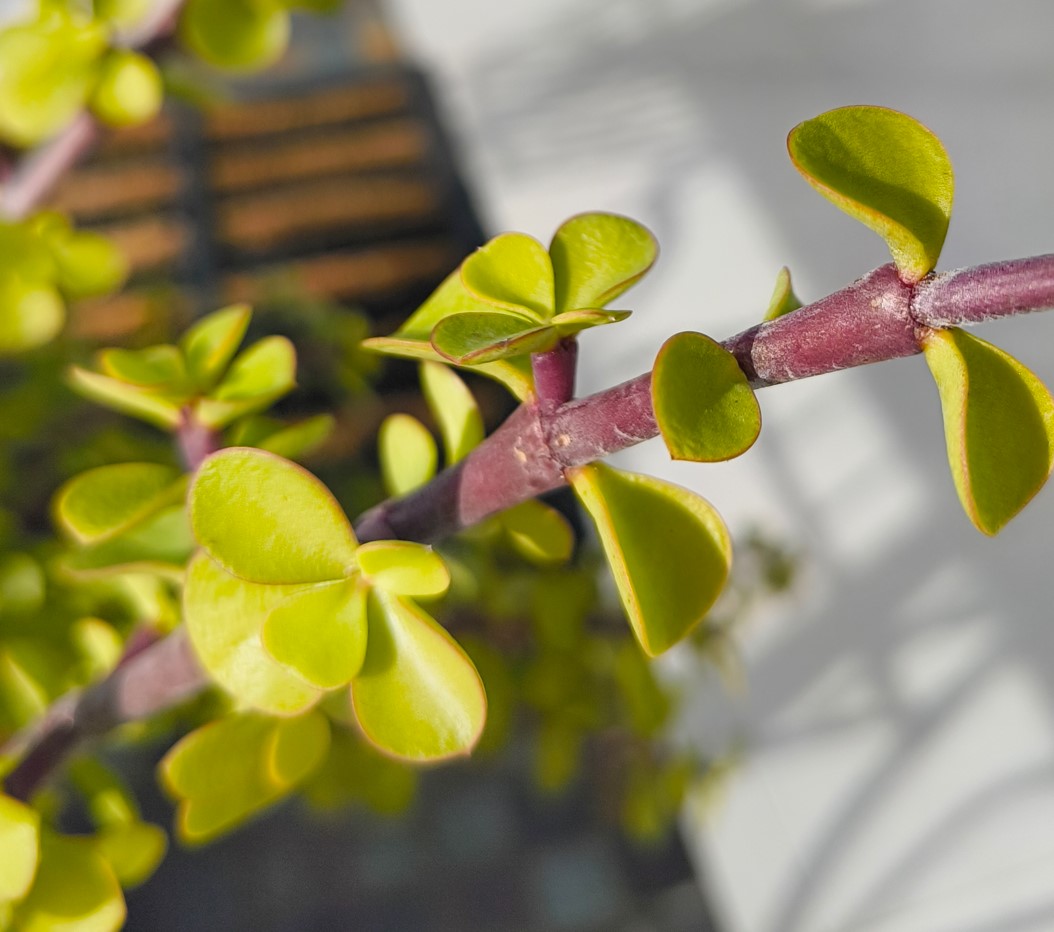


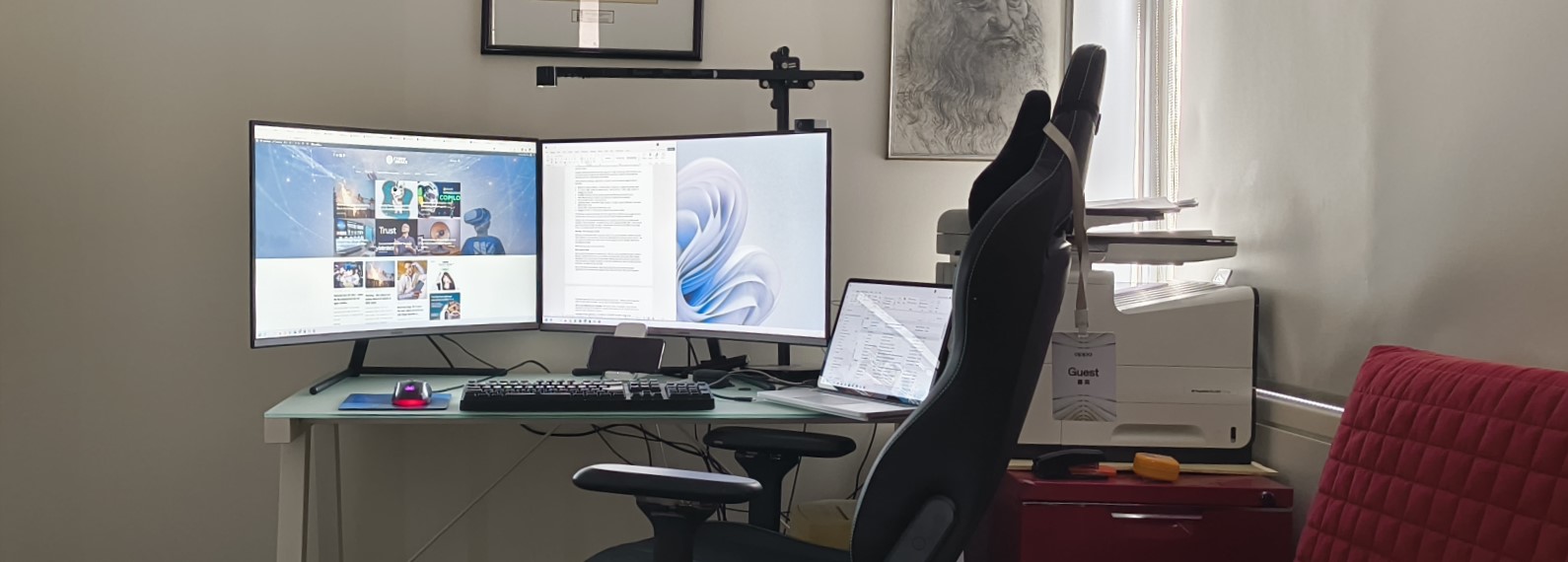
| Rear Primary | Wide |
| MP | 50MP bins to 12.5MP |
| Sensor | Samsung S5KGN9 |
| Focus | PDAF |
| f-stop | 1.9 |
| um | 1 bins to 2 |
| FOV° (stated, actual) | 72.5 to 85.1 |
| Stabilisation | Gyro EIS and OIS |
| Zoom | 8X and crop factor 4.2x |
| Rear 2 | Ultrawide/Macro |
| MP | 50MP bins to 12.5MP |
| Sensor | Samsung S5KJN1 |
| Focus | Fixed |
| f-stop | 2.2 |
| um | .64 bins to 1.28 |
| FOV (stated, actual) | 114 |
| Stabilisation | No |
| Zoom | No |
| Special | The camera app is basic. Night mode is automatic. There are photo, portrait, video, slow-mo, time-lapse, pano, and expert options. You can shoot in 50MP or binned (default). I suspect it is a reskinned Android camera app that uses Google Photos as the storage. |
| Video max | 4K@30fps |
| Flash | Yes |
| Auto-HDR | Yes |
| QR code reader | Google Lens |
| Night mode | Auto |
Nothing (2a) selfie
| Front | Selfie |
| MP | 32MP bins to 8.1MP |
| Sensor | Sony IMX615 |
| Focus | Fixed |
| f-stop | 2.2 |
| um | .8 bins to 1.6 |
| FOV (stated, actual) | 79.3 to 92° for small group selfies |
| Stabilisation | |
| Flash | Screen fill |
| Zoom | No – crop factor 5.2 |
| Video max | 1080p@60fos |
| Comments | We found selfies to be a little artificial in colour. There are no filters. |
CyberShack’s view – Nothing (2a) is nothing to write home about
When I review smartphones, I try to envisage who the best owner of the Nothing (2a) would be.
Frankly, it is someone who cares more about style than substance, and that pretty well describes Gen Alpha (2010-2024), Gen Z (1997-2010) and maybe shallow Millennials (1981-1996). “Oh, look at that shiny, nice thing!”.
If ‘speeds and feeds’ mean anything, you would head straight to the Qualcomm-based $599 Motorola Edge 50 Fusion – the best value smartphone with Edge benefits. Or save money with the $449 Moto g84 5G – how does Motorola do it?
OPPO also has the $599 OPPO A98 5G 2023 – a class leader in many ways, which also has a Qualcomm SoC.
Samsung has the Exynos 1380-powered $549 Samsung A35 5G 2024 – lots of great features at a low price. It does not have the phone antenna coverage.
And no – Motorola, OPPO or Samsung don’t pay us to say that!
Nothing (2a) Ratings
| Ratings | 2024 rating – Pass 70/100 |
| Features | 75 |
| It is not class-leading in any area on speeds and feeds. However, it has everything expected of a $549/$599 phone. We would like to have rated it higher and given it an ‘A” for effort. | |
| Value | 75 |
| There are better-specified and more fully featured phones at similar prices. | |
| Performance | 75 |
| It is a decent SoC for typical users. Camera performance was average. | |
| Ease of Use | 75 |
| It is pure Android with Nothing’s quirky overlay. The 2+3+4 warranty/OS/security is more than adequate. We caution buyers that, unlike Samsung, OPPO or Motorola, this will have almost no resale or trade-in value in a few years. | |
| Design | 80 |
| I don’t mind the design language – you will love or hate it. | |
| Rating out of 10 | 76 |
| Final comment | It is a great second try focusing on price. I understand a Nothing (2a) Plus is coming that may address many of the issues we found. The key to this brand/phone’s success is to be different rather than the me-too speeds and feeds. |
Nothing 2a smartphone
$529 8/128GB or $599 12/256GBPros
- Interesting Glyph light design
- Bright 10-bt OLED screen
- Reasonable 2+3+4 warranty/OS/security patch policy
- Decent full-day battery life
- Glyph lights are a useful ‘gimmick’
Cons
- The camera is point-and-shoot quality.
- Only a city/suburb phone antenna strength
- Sound is not for music.
- Wi-Fi 6E is not implemented here.
- The camera app needs work.
Brought to you by CyberShack.com.au










